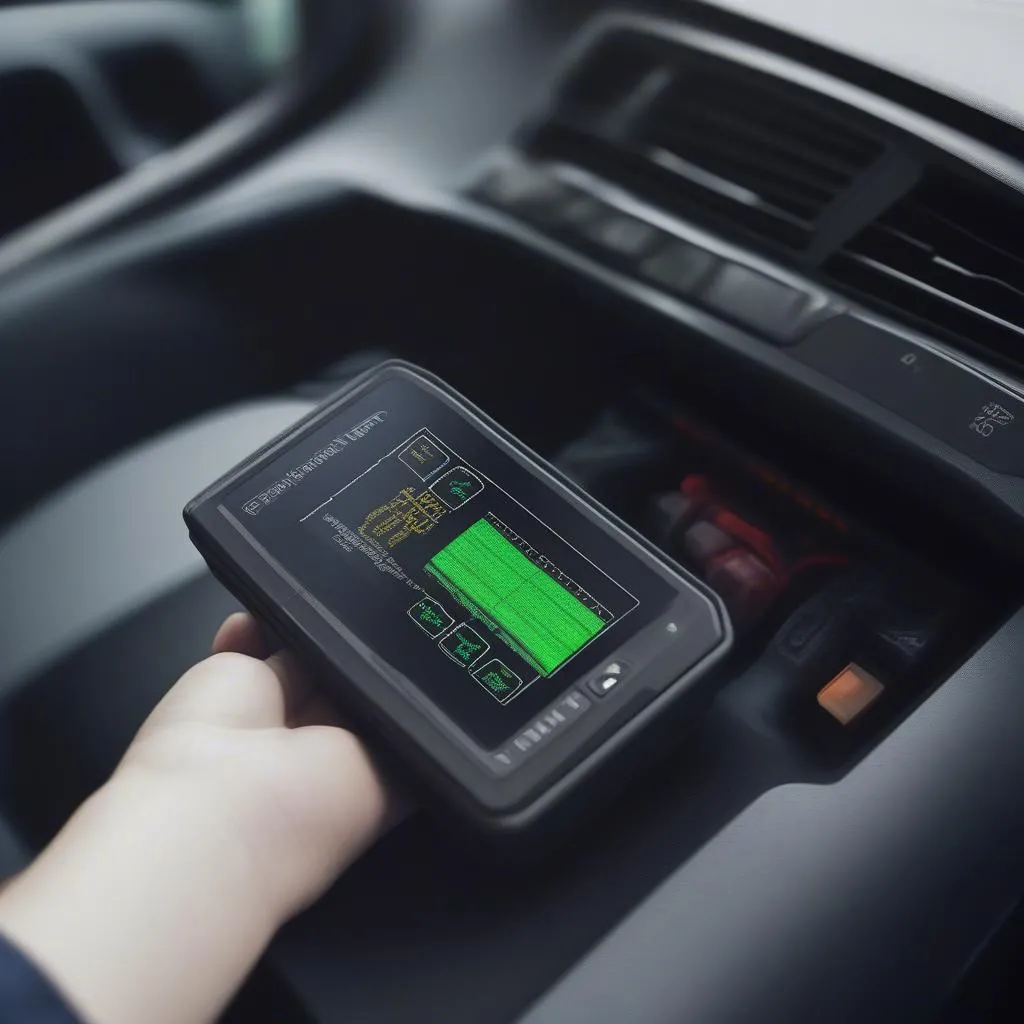Imagine this: you’re cruising down the Pacific Coast Highway in your prized 2018 Ford Mustang, the California sun warming your face. Suddenly, the “check engine” light pops up, casting a shadow over your idyllic drive. You pull over, heart sinking. What do you do?
This, my friend, is where a diagnostic scan tool comes in. It’s the unsung hero of the automotive world, capable of deciphering those cryptic engine codes and pointing you toward the root of the problem. But with so many options flooding the market, finding the best diagnostic scan tool can feel like navigating a Los Angeles traffic jam at rush hour.
What Does “Best Diagnostic Scan Tool” Even Mean?
Before we dive into the nitty-gritty, let’s break down what we actually mean by the “best” scan tool.
For a seasoned mechanic at a bustling garage in Chicago, “best” might translate to a professional-grade bi-directional scanner capable of complex programming and diagnostics on a wide range of makes and models. Think of it as the automotive equivalent of a surgeon’s scalpel – precise, powerful, and capable of handling the most intricate procedures.
For a DIY enthusiast tinkering in their Seattle garage, “best” might mean an affordable, user-friendly code reader that can diagnose basic engine issues and reset the check engine light. This is akin to a reliable first-aid kit – essential for handling minor automotive mishaps and keeping your car running smoothly.
From a purely technical standpoint, the “best” scan tool would be one with the most extensive vehicle coverage, lightning-fast data retrieval, and advanced features like live data streaming and bi-directional control.
Economically speaking, the “best” tool might be the one that offers the most value for its price – balancing functionality with affordability.
Decoding the World of Diagnostic Scan Tools
So, how do you navigate this maze and find the perfect diagnostic scan tool for your needs? Fear not, for we’re here to guide you through the process.
Different Strokes for Different Folks: Types of Scan Tools
-
Code Readers: These entry-level devices are your gateway to understanding those pesky check engine lights. They read and clear basic diagnostic trouble codes (DTCs), providing a general idea of what’s going on under the hood.
-
OBD-II Scanners: A step up from basic code readers, OBD-II scanners offer more detailed information about your car’s engine performance. They can access live data streams, monitor fuel economy, and even provide emission readiness status.
-
Professional-Grade Scanners: These are the heavy hitters of the diagnostic world, favored by experienced mechanics and automotive specialists. They boast advanced features like bi-directional control (allowing you to command various vehicle components), module coding, and access to manufacturer-specific systems.
Key Considerations When Choosing a Scan Tool
Now that you have a better understanding of the different types of scan tools available, let’s explore the factors you should consider before making your purchase:
- Vehicle Compatibility: This is paramount. Ensure the scan tool you choose is compatible with the make, model, and year of your vehicle, especially if you own a European car.
- Functionality: Are you looking for basic code reading, or do you need more advanced features like live data streaming and bi-directional control?
- User Interface: Opt for a scan tool with an intuitive interface, clear display, and easy-to-navigate menus.
- Software Updates: Regular software updates are crucial to ensure compatibility with newer vehicle models and access to the latest features.
- Budget: Diagnostic scan tools can range from affordable to quite expensive. Determine your budget and look for a tool that offers the best value within your price range.
Common Questions About Diagnostic Scan Tools
Can a scan tool fix my car?
While a scan tool is a powerful diagnostic tool, it won’t magically fix your car. It acts as your automotive detective, identifying the source of the problem. Once you understand the issue, you can then address it through repairs or part replacements.
What is the difference between an OBD-I and OBD-II scanner?
OBD stands for On-Board Diagnostics. OBD-I systems were used in vehicles manufactured before 1996 and had a less standardized diagnostic connector. OBD-II, introduced in 1996, offers a universal connector and standardized diagnostic trouble codes, making diagnostics much easier.
Can I use a diagnostic scan tool on any car?
While most modern vehicles use the OBD-II standard, some European car manufacturers like BMW and Mercedes-Benz might require specialized scanners to access manufacturer-specific systems. Always double-check compatibility before purchasing a scan tool.
Are expensive scan tools always better?
Not necessarily. While professional-grade scanners offer a plethora of advanced features, they might be overkill for a DIYer who only needs basic diagnostics. Consider your needs and budget before opting for the most expensive option.
Finding Your Perfect Match: Recommended Diagnostic Scan Tools
Navigating the world of diagnostic scan tools can feel overwhelming, but armed with the right knowledge, you can find the perfect one for your needs. For more detailed information and recommendations, check out our comprehensive guide: What is the best diagnostic scan tool for cars?
Need help choosing the right scanner? Our experts are just a click away! Contact us on Whatsapp at +84767531508 for personalized recommendations and 24/7 support.
We’re here to help you unlock the mysteries of your car and get back on the road to adventure.
Ready to Explore More?
- Best Scan Tool for Car: Link to relevant article
- Where to Buy Car Scan Tools: Link to relevant article
We encourage you to delve deeper into the fascinating world of automotive diagnostics and empower yourself with the knowledge to keep your car running smoothly. Happy driving!
 Professional Grade Diagnostic Scanner
Professional Grade Diagnostic Scanner
 Basic Code Reader
Basic Code Reader
 OBD2 Scanner
OBD2 Scanner


